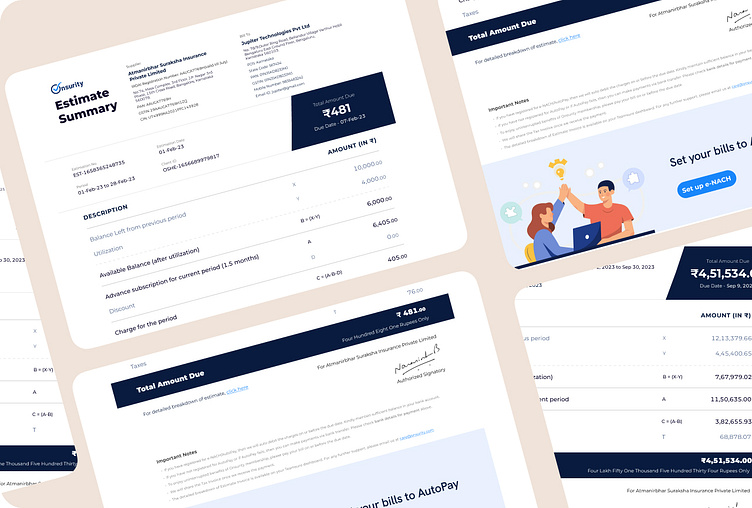Onsurity Invoice - Redesigning
PROJECT OVERVIEW:
We recently completed a major redesign of the Onsurity Invoice, addressing customer confusion and late payments. Previously, only 10% of customers paid their bills within the first five days of the month, often missing due dates and incurring fines.The goal of our redesign was clear to simplify the invoice to ensure customers understand their payment obligations and encourage timely payments.
The results speak for themselves—after implementing the new design, 76% of customers now pay their bills within the first five days of the month. This significant improvement underscores the power of user-centric design in driving positive behavior change.
Research and Challenges of Onsurity Invoice Redesign:
Initial Research Phase: As a designer, your journey began with internal stakeholder engagement, particularly with the sales team. You started by understanding how they explain the plans and pricing to clients. This initial step helped you grasp the foundation of the invoicing process and the key information that needed to be communicated effectively.
Understanding Stakeholder Reactions: Moving forward, you observed how stakeholders, especially clients, reacted upon receiving the first invoice. This phase was crucial in identifying common questions and concerns that arose from the invoice's presentation and content.
Complexity of Invoice Calculations: You recognized that the invoice calculations were intricate, involving data from past, present, and future billing periods. This complexity posed a challenge both in terms of understanding for clients and efficiency in processing internally.
Customer Understanding and Feedback Loop: Despite efforts to explain the invoice, customers continued to face difficulties comprehending it. Each invoice cycle prompted repeated queries, indicating a persistent communication gap.
Integration of Excel Spreadsheet: To manage the complexity, an Excel sheet was used to consolidate all bill calculations. This tool aimed to provide an overview but didn't directly address the challenges clients faced with the invoice itself.
Integration of Excel Spreadsheet: To manage the complexity, an Excel sheet was used to consolidate all bill calculations. This tool aimed to provide an overview but didn't directly address the challenges clients faced with the invoice itself.
Project Focus and Achievements:
Enhancing Clarity on Total Amount: Your primary goal was to ensure clients could easily notice the total amount due and proceed with payment directly from the invoice.
Outcome and Impact:
After implementing these improvements, there was a significant increase in the percentage of clients paying promptly on the first day of receiving the invoice. The transition from 10% to 76% indicates a substantial improvement in client engagement and understanding.
